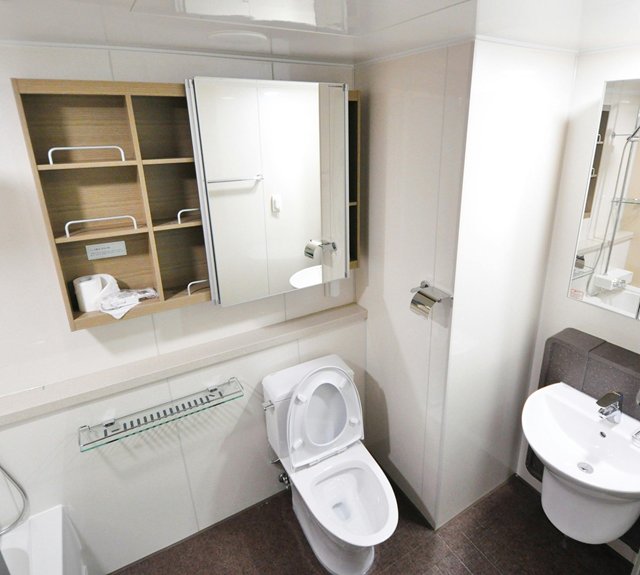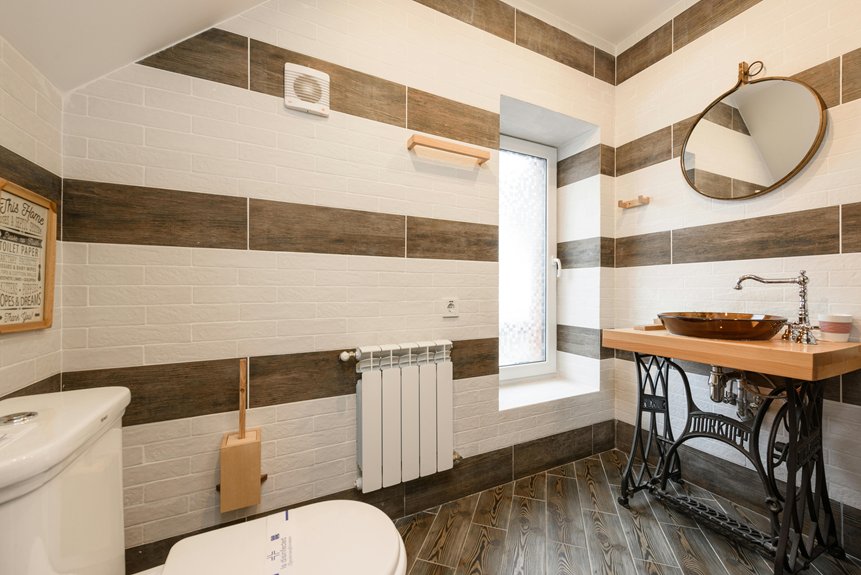Is it true that most toilet clogs can be resolved with just a plunger? While this tool is effective for many situations, there are instances where a deeper understanding of the problem is required. Knowing the right techniques and tools can make a significant difference. Before you grab that plunger, let’s explore the causes of clogs and the best strategies for clearing them effectively.
Key Takeaways
- Use a flange plunger for effective suction; ensure it creates a tight seal over the drain before plunging.
- Try natural remedies like bicarbonate of soda and vinegar or hot water to break down clogs.
- Utilise a drain snake for stubborn blockages that resist plunging efforts.
- Regularly inspect and maintain your toilet to prevent clogs from forming in the first place.
- Call a professional plumber if clogs persist or multiple fixtures are affected, indicating a larger issue.
Understanding the Causes of Toilet Clogs
While you may not think much about it, understanding the causes of toilet clogs can save you time and frustration.
Common clogging causes include excessive toilet paper usage, non-flushable items, and buildup from hard water minerals.
Regularly inspecting your toilet for any signs of wear or damage can prevent clogs.
Implementing toilet maintenance tips, like using enzyme cleaners and ensuring proper flushing techniques, will keep your plumbing in good condition.
Additionally, educating yourself on what can safely go down the toilet will minimise the risk of clogs and extend the life of your toilet.
Essential Tools for Unclogging a Toilet
To effectively unclog a toilet, you’ll need the right tools at your disposal.
Understanding the different types of plungers and knowing how to use a drain snake can make a significant difference in your success.
Let’s explore these essential tools and how they can help you tackle stubborn clogs.
Plunger Types Explained
Understanding the different types of plungers is essential for effectively unclogging a toilet. You’ll find that choosing the right plunger material and design can make a significant difference in your success.
| Plunger Type | Description |
|---|---|
| Cup Plunger | Ideal for standard toilets; flexible rubber cup creates a seal. |
| Flange Plunger | Features an extended rubber flange for better sealing in toilets. |
| Accordion Plunger | Made of hard plastic; generates more pressure, useful for tough clogs. |
Select the appropriate plunger based on your toilet’s needs, and you’ll tackle clogs more efficiently.
Essential Drain Snake Tools
A drain snake is an essential tool for tackling stubborn toilet clogs that a plunger can’t shift.
When choosing a drain snake, opt for a flexible model with a length of at least 25 feet, allowing you to reach deeper blockages. Look for a snake with a sturdy handle for better grip and control. Some plumbing tools also come with various attachments, like auger heads, for enhanced performance on different types of clogs.
Before using your drain snake, make sure you wear gloves and have a bucket handy to catch any debris. This way, you’ll efficiently clear your toilet and restore proper function.
The Plunger Method: Step-by-Step Guide
To effectively unclog your toilet, start by selecting the right plunger—preferably a flange plunger for better suction.
Once you have the correct tool, use a proper plunging technique to maximise your chances of clearing the blockage.
Follow these steps closely to guarantee a successful unclogging process.
Selecting the Right Plunger
Choosing the right plunger can make all the difference when tackling a clogged toilet.
Start by considering plunger materials; rubber plungers are durable and provide excellent suction, while plastic options may be lighter but less effective.
Next, evaluate plunger sizes. A standard-sized plunger typically fits most toilets, but if your toilet has a unique shape or design, you might need a flange plunger for better sealing.
Verify the handle is comfortable and long enough for effective leverage.
With the right plunger in hand, you’ll be better equipped to resolve your toilet clog efficiently and effectively.
Proper Plunging Technique
With the right plunger selected, mastering the proper plunging technique is key to unclogging your toilet effectively.
Follow these steps to apply the right plunging pressure at the correct toilet angle:
- Position the Plunger: Ensure the rubber cup covers the drain completely at a slight angle.
- Create a Seal: Push down gently to form a tight seal before applying force.
- Plunge Firmly: Use strong, quick thrusts while maintaining pressure, allowing the toilet’s water to help dislodge the blockage.
Using a Toilet Auger for Stubborn Clogs
A toilet auger, often referred to as a plumbing snake, is an essential tool when faced with stubborn clogs that a plunger can’t clear.
To use it effectively, first insert the auger’s end into the toilet bowl, ensuring it’s positioned at the drain opening. Gently push the cable down while turning the handle to engage auger techniques.
If you encounter resistance, keep turning to break through stubborn blockages. Once the obstruction loosens, retract the cable slowly to prevent any mess.
Flush the toilet to test if the blockage is cleared. Clean the auger thoroughly after use to maintain its effectiveness.
Chemical Drain Cleaners: Pros and Cons
Chemical drain cleaners can be a quick solution for clearing stubborn clogs. However, they come with significant drawbacks.
Consider these pros and cons:
- Effectiveness: They often dissolve clogs quickly, saving you time.
- Health Risks: These products contain harsh chemicals that can pose serious health risks if inhaled or if they come into contact with skin.
- Environmental Impact: Many drain cleaners can harm aquatic life and contaminate water sources.
Weigh these factors carefully before opting for chemical drain cleaners.
Sometimes, traditional methods may be safer and more environmentally friendly in the long run.
Natural Remedies for Unblocking Toilets
If you prefer a safer, eco-friendly approach to unclogging your toilet, natural remedies can be highly effective.
Start by pouring a cup of bicarbonate soda into the bowl, followed by two cups of a vinegar solution. Let it fizz for about 30 minutes.
Next, boil a pot of hot water and carefully pour it into the toilet to help break down the blockage.
Alternatively, a salt mixture—combining half a cup of salt with hot water—can also work wonders.
For added freshness, consider adding a few drops of essential oils to the mix.
These methods are practical and efficient!
When to Call a Professional Plumber
While many minor clogs can be handled with DIY methods, there are situations where calling a professional plumber becomes essential.
Some clogs can be fixed at home, but certain situations demand the expertise of a professional plumber.
Recognising these plumbing emergencies can save you time and prevent further damage. Here are three scenarios to evaluate:
- Persistent Clogs: If your toilet remains clogged after multiple attempts to clear it, it’s time to call for help.
- Multiple Fixtures Affected: When other drains in your home are also backing up, this indicates a larger issue.
- Emergency Situations: If there’s water overflow or potential flooding, don’t hesitate—contact a plumber immediately.
Preventive Measures to Avoid Future Clogs
To prevent future clogs in your toilet, it’s crucial to adopt some simple yet effective practices.
Start by improving your toilet habits; only flush human waste and toilet paper. Avoid disposing of items like wipes, feminine products, or dental floss, as they can easily block pipes.
Educate others in your household on proper waste disposal methods to reinforce these practices.
Additionally, consider using a toilet auger periodically to break up any buildup before it becomes a major issue.
Tips for Maintaining a Healthy Toilet System
Maintaining a healthy toilet system requires regular attention and care to guarantee peak performance.
By following these toilet maintenance tips, you can prevent issues before they arise:
- Check for leaks: Regularly inspect the cistern and bowl for any signs of water leakage, which can waste water and increase bills.
- Use appropriate products: Only flush toilet paper and human waste; avoid flushing wipes or other items that can cause blockages.
- Clean regularly: Use a toilet cleaner to eliminate buildup and keep the bowl sanitary, promoting efficient flushing.
Implement these plumbing tips to ensure your toilet remains in prime condition.
Conclusion
You’ve now got the tools and techniques to tackle toilet clogs effectively. Coincidentally, understanding when to use a plunger or a toilet auger can make all the difference in your plumbing experience. By applying natural remedies and knowing when to call in a professional, you not only resolve issues but also prevent future headaches. Maintaining your toilet system is key—little actions today can save you from bigger problems tomorrow. Keep it flowing smoothly!




